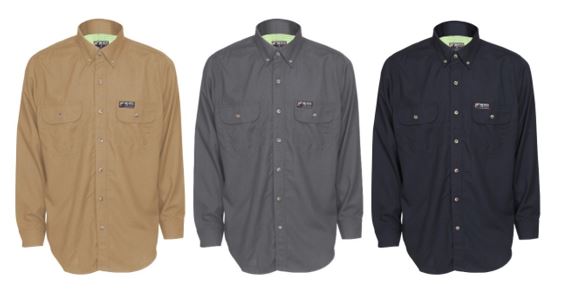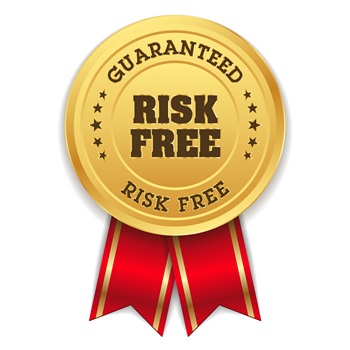12 Dec 12/12/2019
Understanding Formaldehyde and Formaldehyde Free FR Clothing
Most industrial and manufacturing jobs involve exposure to a variety of chemicals and materials that require quality personal protective equipment (PPE). One chemical that many workers encounter frequently is formaldehyde. Exposure to this chemical may come in its basic chemical form or from a physical product that uses formaldehyde as one of its ingredients. This chemical compound is found in many applications and products familiar to all of us in modern life, but it is not without its dangers.
Formaldehyde is especially toxic to individuals who are exposed to high levels of it, which often happens at work. Thus, certain precautions must be taken to mitigate the health risks associated with formaldehyde exposure on the job. Some ways to do this include following OSHA regulations and wearing high-performance PPE that can keep workers safe.
MCR Safety protects workers in all industries and jobs with our top-of-the-line PPE. We provide protective goggles, gloves, and garments that guard against chemicals and toxins so that you can return to your job safely day after day with no ill effects. One of those chemicals our PPE protects against is formaldehyde. However, formaldehyde is also used in the manufacturing of a lot of PPE, which presents an irony. Formaldehyde is a harmful substance with a strong smell and it has been identified as an allergen to many people. As a result, we’ve begun taking measures to ensure we offer formaldehyde-free PPE. For example, our new lineup of inherent blended Summit Breeze® FR Clothing doesn’t use formaldehyde during the manufacturing process.
If you work with formaldehyde on the job or are curious about the variety of formaldehyde uses, here are some things you should know about the chemical and how to work around it safely.
What is formaldehyde?
Simply put, formaldehyde is a colorless, odorous chemical compound made of hydrogen, oxygen, and carbon. All life forms, whether bacteria, fish, or humans, make small amounts of formaldehyde as part of the cell metabolism process.
Because formaldehyde is composed of such basic elements, it is considered a building block chemical that has many applications in industrial, manufacturing, and healthcare settings.
U.S. National Library of Medicine for Formaldehyde
• For all things pertinent to any chemical, we recommend visiting the U.S. National Library of Medicine. There you will find a litany of information and over 20 different content summaries for formaldehyde, ranging from the compound summary to its chemical structure to its toxicity levels. Here are links to all twenty different content summaries:
• 1 Structures
• 2 Names and Identifiers
• 3 Chemical and Physical Properties
• 4 Spectral Information
• 5 Related Records
• 6 Chemical Vendors
• 7 Drug and Medication Information
• 8 Food Additives and Ingredients
• 9 Agrochemical Information
• 10 Pharmacology and Biochemistry
• 11 Use and Manufacturing
• 12 Identification
• 13 Safety and Hazards
• 14 Toxicity
• 15 Literature
• 16 Patents
• 17 Biomolecular Interactions and Pathways
• 18 Biological Test Results
• 19 Classification
• 20 Information Sources
Formaldehyde MSDS
MCR Safety does not manufacture or distribute formaldehyde, so we don’t produce an official Material Safety Data Sheets (MSDS) document for this specific chemical. However, we’ve identified a couple of produced MSDS by others that contain some extremely helpful information for anyone coming into contact with formaldehyde. In addition to the U.S. National Library of Medicine, an MSDS can provide a lot of excellent information.
Here are a couple we’ve found that can give you more information on formaldehyde:
1. Labchem Formaldehyde MSDS
2. Unil Formaldehyde MSDS
Formaldehyde Smell
Formaldehyde is a chemical with a strong smell; if there’s some around, you’ll know it. Formaldehyde can be smelled at extremely low levels. Those with respiratory problems should be concerned if they smell formaldehyde, as they may experience breathing problems as a result.
PPE made with formaldehyde in the manufacturing process keeps a lot of that chemical smell when it sits in its packaging. When you open the package to take it out, the stench of formaldehyde is likely to hit you pretty quickly. However, PPE that is formaldehyde-free does not have that same strong smell, even right out of the package, making it more pleasant and ready-to-wear than its counterparts.”
OMG! Who is wearing clothing with formaldehyde in it?
More on formaldehyde-free clothing below.
Formaldehyde Allergy
Formaldehyde is a potent irritant beyond its strong odor! For anyone diagnosed with a formaldehyde allergy, it becomes necessary to avoid exposure to any products containing the chemical. People who are allergic or hypersensitive to formaldehyde should avoid all clothing or fabric made using this chemical. More on this below.
Formaldehyde Uses
You might remember formaldehyde from your high school biology class where it was used as a preservative, but this chemical has many other applications thanks to its basic chemical composition. Uses for formaldehyde go well beyond your typical science class.
So, where is formaldehyde found? As you can see in the above image, formaldehyde can be found in both expected and unexpected places. It is used in resins, wood products, automobiles, and health care. A primary reason for its popularity as a chemical is due to its low cost.
The list of substances and products containing formaldehyde is extensive, so we’ve broken it up into a couple of different categories. Keep in mind, formaldehyde is used in so many products, we can’t list all of them. Here are the most common places you’re likely to find formaldehyde in modern life:
At Work
Formaldehyde is used to manufacture fertilizer, paper, plywood, and urea-formaldehyde resins. And this is just the beginning; it is found in thousands of common products across many industries:
• Fertilizers and pesticides in agriculture
• Composite wood products, wood resins, and glues in building and construction
• Resins, primers, paints, adhesives, and car parts in automobile manufacturing
• Vaccines and anti-infective drugs in pharmaceutical manufacturing
• Hair dyes and beauty products in personal-care production and cosmetology
• Resins and foam insulation in plastics manufacturing
• Embalming solution in mortuaries
• Waterproof finishes
• Chlorine-resistant finishes
Workers in these industries can expect regular exposure to formaldehyde or products that contain it.
If you work in an environment with high levels of formaldehyde, your employer should require safety precautions, including wearing PPE, so you do not suffer the effects of long-term formaldehyde exposure.
At Home
If you thought you could escape formaldehyde exposure once you left work, think again. Formaldehyde has many uses in the home as well. Fortunately, you probably won’t be exposed in your home to levels of formaldehyde as high as individuals who work with the chemical at their job, but every home has at least trace amounts of formaldehyde.
Here are the most common sources of formaldehyde in the home:
• New construction materials like manufactured wood products
• Permanent-press fabrics used for curtains and furniture
• Household glues, caulks, and paints
• Personal-care products and cosmetics
• Detergents
• Pesticides
• Tobacco products and tobacco smoke
• Insulation
• Plywood and particleboard
• Carpeting and furniture
Low levels of formaldehyde are generally acceptable. If you live in a home built after 1990, you probably have a measurable amount of the chemical in the air simply because your home’s insulation restricts airflow. But that level is unlikely to be considered dangerous.
Formaldehyde Effects
Although it is a naturally occurring chemical and used in thousands of everyday products, formaldehyde does pose some health risks. Exposure can irritate the eyes, lungs, skin, and throat. Affected individuals may experience coughing, wheezing, and itching.
Exposure to elevated levels of formaldehyde can trigger:
• Asthma attacks
• Watery and burning eyes
• Headaches
• Respiratory irritations
It is believed that formaldehyde is also carcinogenic. Some studies indicate that repeated exposure to high amounts of the chemical can cause cancer. The Department of Health and Human Services has shown that formaldehyde causes cancer in animals, but the jury is still out on how dangerous low-level exposure is to humans. Ingesting formaldehyde, however, can be fatal.
Formaldehyde Dangers and OSHA Regulations
Because of the health risks posed by formaldehyde exposure, the Occupational Safety Health Administration (OSHA) issues guidelines to employers to keep workers safe. These regulations apply to all occupational exposures to formaldehyde in all of its forms and establish that the permissible exposure limit for formaldehyde in the workplace is 0.75 parts formaldehyde per million parts of air.
Employers have the responsibility of protecting employees from overexposure to formaldehyde. Per OSHA standards, employers are required to take the following precautions:
- Identify all workers who may be exposed to dangerous levels of formaldehyde.
- Reassign workers who suffer significant adverse effects from formaldehyde exposure.
- Implement feasible controls to reduce exposure to formaldehyde and/or provide respirators to workers who are exposed.
- Label all mixtures or solutions composed of greater than 0.1% formaldehyde and materials capable of releasing formaldehyde into the air at concentrations of 0.1 ppm or more.
- Train all workers exposed to formaldehyde concentrations of 0.1 ppm or greater. Repeat training annually.
- Provide and maintain appropriate personal protective equipment (PPE).
- Provide showers and eyewash stations.
- Provide medical surveillance for all workers exposed to dangerous levels of formaldehyde or for those who show symptoms of exposure.
- Retain exposure records for 30 years.
- Retain medical records for 30 years after employment ends.
- Allow access to medical and exposure records to current and former workers or their designated representatives.
Employees can take responsibility for their safety by following these measures and any other rules their employers dictate about formaldehyde safety.
Formaldehyde PPE and Safety
Anyone working with formaldehyde regularly must wear proper PPE to reduce the adverse effects of formaldehyde exposure.
The most common way people are exposed to formaldehyde is through inhalation when the chemical is in gas form. While MCR Safety doesn’t manufacture respiratory equipment, we take this opportunity to point out the #1 hazard employees face when it comes to this chemical, so that you can take steps to protect yourself. We are committed to ensuring worker safety.
With that said, formaldehyde exposure can also happen with liquid formaldehyde, which can be absorbed through the skin or ingested. Here are some common types of PPE worn when working around formaldehyde:
Protective Safety Goggles: Formaldehyde is corrosive and the eyes are vulnerable to splash or gas exposure. Thus, safety goggles are required for use with this chemical. Here is our selection of goggles. We recommend our Max 6 styles, which are 6X more powerful than standard AF styles.
Protective Gloves: The University of California recommends wearing medium- to heavyweight neoprene gloves when handling formaldehyde or formaldehyde products. Our 5434 would be an example of a medium- to heavyweight neoprene glove appropriate for use with formaldehyde.
Protective Garments: We supply a wide selection of aprons, rainwear, and jackets to protect you from chemical exposure. Here are the chemical test by series:
200 Series
300 Series
388 Series
While it is the employer’s job to provide training, PPE, and safety protocols, employees should take advantage of the protections offered. Never, ever, work without putting on your PPE, even if it means it will take a little extra time to put it on or you don’t care for the garments.
Not only does MCR Safety offer PPE that keeps you protected from formaldehyde, but we’re also now making PPE without formaldehyde in its chemical makeup.
Is Your PPE Okeo-Tex® Certified?
To become Okeo-Tex® certified, clothing must be 100% free of over 100 different harsh chemicals. You can check out Okeo-Tex’s website to learn more about their testing standards and processes.
The tests for harmful substances per STANDARD 100 by OEKO-TEX® take into consideration important legal regulations from the U.S. Consumer Product Safety Improvement regarding banned azo dyes, formaldehyde, pentachlorophenol, cadmium, nickel, etc.
An Okeo-Tex® product certification provides the end consumer with a reliable, third-party, independent product label for non-hazardous products. If you’re allergic to formaldehyde, this is the certification you need to see when purchasing clothing.
For more on Okeo-Tex®, go here.
Formaldehyde-Free FR Clothing

If you work around formaldehyde, the last thing you need is clothing with more of the chemical in it. For those who are allergic to formaldehyde, this is especially important! That’s why MCR Safety now offers formaldehyde-free FR clothing. Our new 5.5 oz. Summit Breeze® Inherent Blended FR Coveralls and Work Shirts are Okeo-Tex® certified.
In addition to being Okeo-Tex® certified, Summit Breeze® products are triple-vented, providing users with an extremely comfortable product and burn performance scores of 47% less due to the triple venting.

Triple Venting
All around, Summit Breeze products are some of the best FR clothing products you’ll find on the market today!
MCR Safety’s FR Clothing Resources
MCR Safety believes in offering high-quality products that provide superior protection. In addition to that, we are passionate about making sure you’re informed when making crucial PPE decisions. That is why we offer numerous FR resources to stay up-to-date on all relevant PPE, standards, hazards, and much more.
Here are the resources we’ve assembled to help you find the most appropriate FR clothing:
- Electrician Page
- FRC Resource Page
- FRC Knowledge Center
- FRC Electric ARC Performance
- FRC 70E
- FR Online Catalog
- Summit Breeze® Page
- Summit Breeze® PDF
Risk-Free Trial

Utility linemen, substation workers, and electrical workers across the country are now armed with one of the lightest, most comfortable FR products available on the market. Are you ready to try out MCR Safety’s FR clothing with Summit Breeze® technology?
If you are, we’re happy to pay the shipping to send you one of our FR products! We know you’ll be satisfied, but if you’re not quite as certain, we’re happy to issue a risk-free product trial period, too! Just leave us a comment here with your interest and we’ll be in touch.
Get your 70E FR Clothing with Summit Breeze technology on order today! We can either have your preferred distributor process the order or we can send one out via our Buy and Try website. Let us know what product you are interested in, and we will help get your risk-free trial order processed and shipped to you.
Protect Yourself from Formaldehyde Exposure
Formaldehyde is everywhere, but it doesn’t become a danger unless you work with large amounts of it regularly. In that case, durable PPE can protect you from noxious chemicals without sacrificing comfort or range of motion.
For the perfect combination of protection, function, and comfort, peruse MCR Safety’s selection of reliable, formaldehyde-free garments and other PPE. We are committed to protecting people and can provide all the safety equipment you need.
No matter your industry or profession, for over 45 years, MCR Safety has proven to be a world leader in gloves, glasses, and garments. Whether it’s on the shop floor, an oil rig, or a construction site, we are there providing solutions to workplace hazards. It’s all part of our commitment to protect people.
For more information, browse our website, request a catalog, find a distributor, or give us a call at 800-955-6887.
About the Author
Latest Articles





